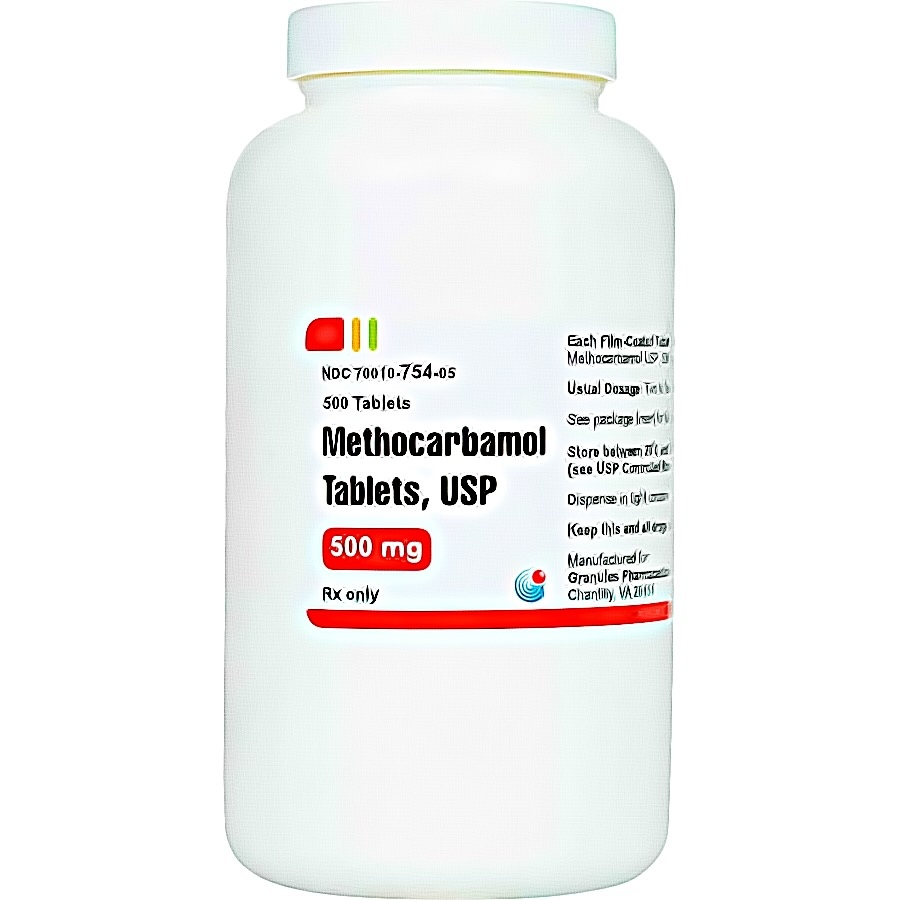Methocarbamol is a central nervous system (CNS) depressant and muscle relaxant to relieve pain and discomfort associated with muscle spasms.
This muscle relaxant is a prescription medication available in tablet, capsule, and injectable forms. It treats muscle spasms and pain and is typically taken three or four times daily. Methocarbamol is not an analgesic and should not be used in the absence of pain.
Is Methocarbamol Addictive
Methocarbamol is not considered addictive. However, it is possible to develop a tolerance to the medication. This means that higher doses may be needed to achieve the same effect. Talk to your doctor if you need to take higher doses of methocarbamol. They may be able to recommend an alternative medication.
What Is Methocarbamol
Methocarbamol is a central nervous system (CNS) depressant that was first approved for use in the United States in 1957. It is commonly used to relieve muscle pain and spasms associated with acute, painful musculoskeletal conditions. It is also used in horses and dogs to treat similar conditions.
The mechanism of action of methocarbamol is not completely understood, but it is thought to work by depressing the activity of the brain and spinal cord.
Methocarbamol is structurally similar to guaifenesin, a medication used to treat cough and cold symptoms. It is also similar to the muscle relaxant cyclobenzaprine and shares many of its pharmacological properties. Methocarbamol is available as a generic medication and sold under various brand names, including Robaxin, Skelex and Robaxin-750.
How Methocarbamol Works
Methocarbamol works by blocking pain signals that are sent to the brain. This action helps to relieve pain and muscle spasms.
The exact mechanism of the action of methocarbamol is not known. However, it is thought to work by depressing the central nervous system, which reduces muscle spasms. Methocarbamol is thought to have a similar mechanism of action to other skeletal muscle relaxants, such as cyclobenzaprine and carisoprodol.
Methocarbamol is well-absorbed from the gastrointestinal tract, and peak concentrations are reached within 1-2 hours. It is widely distributed throughout the body and crosses the blood-brain barrier. Methocarbamol is metabolized in the liver and excreted in the urine. The half-life of methocarbamol is approximately 2 hours.
Methocarbamol should not be used during pregnancy unless the potential benefits outweigh the potential risks. The drug is excreted in breast milk and may cause side effects in nursing infants. Also, this should not be used in people with porphyria or myasthenia gravis.
How Does Methocarbamol Interact With Other Medications
Methocarbamol can interact with other medications, leading to serious side effects. Be sure to tell your doctor about all your medications, including over-the-counter drugs, vitamins, and herbal supplements. Do not start or stop any medications without first talking to your doctor.
Some of the medications that can interact with methocarbamol include:
- Anticholinergics: Methocarbamol can increase the effects of these medications, which treat conditions such as urinary incontinence and Parkinson’s disease.
- Antidepressants: Methocarbamol can increase the effects of these medications, which are used to treat conditions such as depression and anxiety.
- Blood thinners: Methocarbamol can increase the effects of these medications, which treat conditions such as heart disease and stroke.
- Seizure medications: Methocarbamol can increase the effects of these medications, which are used to treat conditions such as epilepsy.
- Tricyclic antidepressants: Methocarbamol can increase the effects of these medications, which treat conditions such as depression and anxiety.
- Sedatives: Methocarbamol can increase the effects of these medications used to treat conditions such as insomnia.
- Alcohol: Drinking alcohol while taking methocarbamol can increase the risk of side effects such as drowsiness and dizziness.
It is crucial to take methocarbamol exactly as prescribed by your doctor. Do not take more or less of the medication than directed, and do not take it for a longer period than prescribed.
What Is the Dosage for Methocarbamol
Methocarbamol is a medication used to treat muscle pain and stiffness. It is available in both oral and injectable forms. The oral form is taken by mouth, while the injectable form is given intramuscularly (into the muscle). The recommended dosage for each form varies depending on the indication for use.
The recommended dose for adults is 500 mg four times daily. For children, the recommended dose is 10-20 mg/kg four times daily.
The oral form of methocarbamol is typically taken four times a day. The recommended starting dose is 500 mg, which can be increased to 750 mg if needed. The injectable form is given in a single dose of 1,000 mg.
Methocarbamol is generally well-tolerated; the most common side effects are dizziness, drowsiness, and headache. Serious side effects are rare but can include allergic reactions, liver damage, and low blood pressure.
If you are considering taking methocarbamol, talk to your healthcare provider to ensure that it is the right medication for you.

What Are the Side Effects of Methocarbamol
Methocarbamol is a muscle relaxant commonly used to treat pain and muscle stiffness. While methocarbamol is generally considered safe, it can cause some side effects. The most common side effects include:
- dizziness
- drowsiness
- lightheadedness
- headache
Other less common side effects include:
- nausea
- vomiting
- constipation
- rash
You should talk to your doctor if you experience any side effects. They may be able to prescribe a different medication or adjust your dosage. In most cases, the side effects of methocarbamol are mild and go away on their own.
The most common serious side effect of methocarbamol is an allergic reaction. This can cause symptoms such as hives, swelling, and difficulty breathing. You should seek medical attention immediately if you experience any of these symptoms.
Other serious side effects of methocarbamol include:
- seizures
- difficulty urinating
- yellowing of the skin or eyes (jaundice)
- dark urine
- severe stomach pain
- unusual bleeding or bruising
- flu symptoms
- convulsions/seizures
If you experience these side effects, stop taking methocarbamol and contact your doctor immediately.
Methocarbamol may also cause impaired thinking and memory, and it should be used with caution in people with a history of mental illness.
Also, it should not be used in people with a history of drug or alcohol abuse, and it should be used with caution in people with liver or kidney disease.
Is Methocarbamol Habit-Forming
Methocarbamol can be habit-forming, and taking it for a longer period than prescribed can lead to addiction. If you take it for a long period, you may develop a tolerance for it. This means that you will need to take larger and larger doses to get the same effect.
How Common Is Methocarbamol Abuse and Addiction
Methocarbamol is structurally similar to both barbiturates and benzodiazepines and has similar effects. However, it is not as potent as either of these drug classes and has a relatively short duration of action.
Methocarbamol abuse and addiction are not common, but they can occur. Because of common side effects such as drowsiness, lightheadedness, and dizziness are thought to cause “high” or elated feelings. So, they may misuse methocarbamol in high doses.
The most likely population to abuse methocarbamol are people who are already abusing other central nervous system depressants, such as alcohol or benzodiazepines. Methocarbamol can be addictive, and people who abuse it can develop a tolerance and dependence on the drug.
Signs of methocarbamol abuse include taking higher doses than prescribed, taking the medication more often than prescribed, and continuing to use the medication despite negative consequences.
Methocarbamol abuse can lead to serious health problems, including overdose. Treatment for methocarbamol abuse and addiction typically includes behavioral therapy and counseling.
Conclusion
Methocarbamol is a relaxant medication that is typically used to treat muscle spasms. It is believed to work by interfering with the transmission of signals between the nerves and the brain. While methocarbamol is generally considered safe, there is a potential for abuse and addiction.

